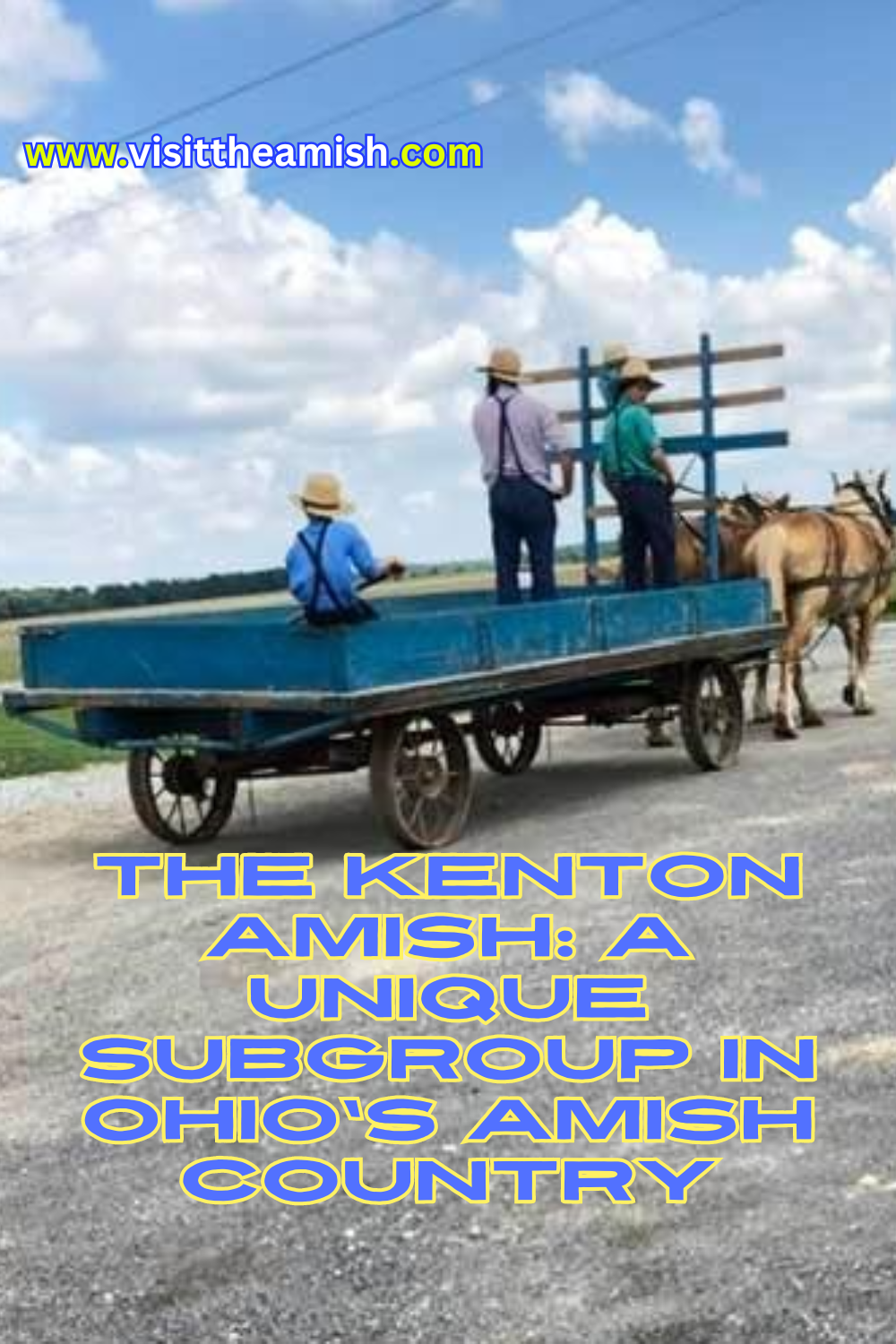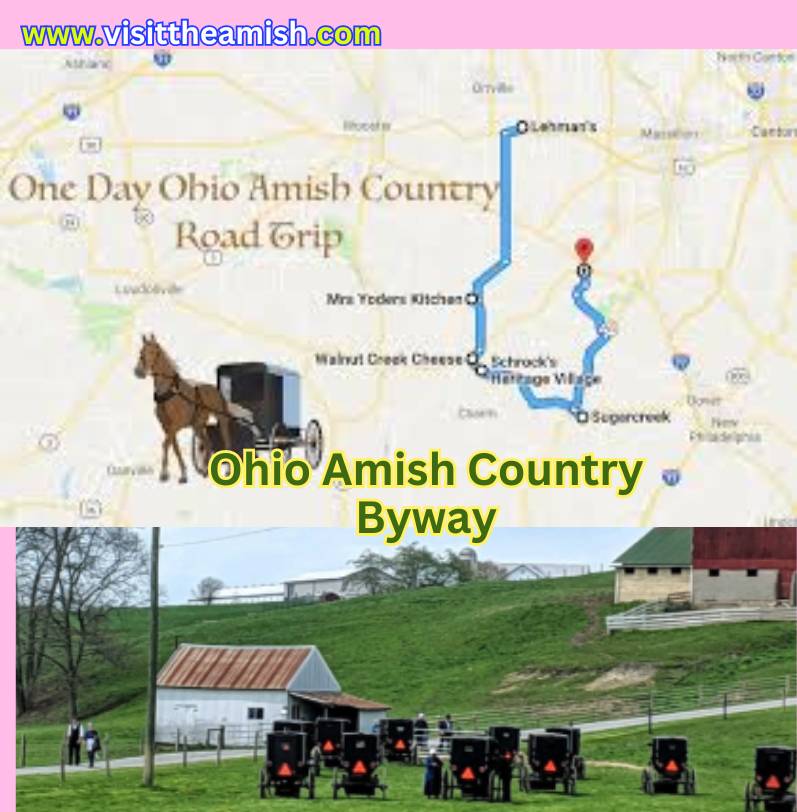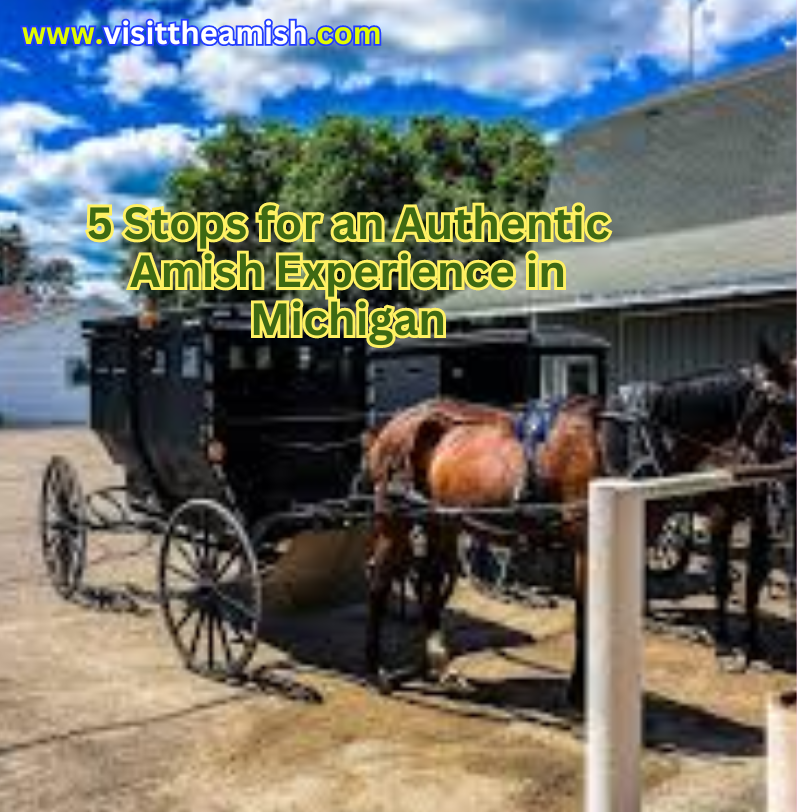The Kenton Amish: A Unique Subgroup in Ohio’s Amish Country
As you drive through the rural backroads of Hardin County, Ohio, you may encounter horse-drawn buggies and plainly dressed individuals going about their daily lives. These are members of the Kenton Amish community, a distinctive subgroup within the broader Amish population. To understand the Kenton Amish, you must first grasp the complex tapestry of Amish subgroups and their varying degrees of conservatism.
The Amish Spectrum
The Amish are not a monolithic group. Over the years, they have divided into numerous subgroups due to doctrinal disputes[1]. These subgroups can be broadly categorized, from most progressive to most conservative, as:
- Beachy Amish
- New Order Amish
- Old Order Amish
- Swartzentruber Amish
The Kenton Amish fall into the Old Order category, but with some unique characteristics that set them apart from other Old Order communities.
Beliefs and Practices of the Kenton Amish

Religious Foundation
Like all Amish groups, the Kenton Amish adhere to a literal interpretation of the Bible and follow an unwritten set of rules called the Ordnung[4]. They believe in adult baptism and emphasize humility, family, community, and separation from the world.
Language
You’ll find that the Kenton Amish, like most Amish communities, are trilingual[4]. They speak:
- Pennsylvania Dutch (a dialect of German) at home
- High German during worship services
- English when interacting with non-Amish people
Education
The Kenton Amish, in line with other Old Order groups, send their children to private one-room schoolhouses. Education typically ends after the eighth grade, after which young people begin working on family farms or businesses[4].
Technology and Modern Conveniences
While not as restrictive as the Swartzentruber Amish, the Kenton Amish maintain a cautious approach to technology. You won’t find electricity, phones, or televisions in their homes[2]. They use horse-drawn buggies for transportation, rejecting car ownership as they believe it would provide easier access to worldly influences[2].
Dress and Appearance
When you encounter Kenton Amish, you’ll notice their distinctive dress:
- Women and girls wear solid-colored dresses with long sleeves and full skirts, covered by a cape and apron. Married women wear white prayer coverings, while single women wear black ones[4].
- Men and boys don dark-colored suits, straight-cut coats without lapels, broadfall trousers, and suspenders. They wear solid-colored shirts, black socks and shoes, and broad-brimmed hats[4].
Married men grow beards but do not have mustaches. The Amish view this distinctive clothing as a way to encourage humility and maintain separation from the world[4].
Unique Aspects of the Kenton Amish
Geographic Location
The Kenton Amish are primarily located in Hardin County, Ohio, with a significant presence around the town of Kenton[2]. This area is generally situated between routes 309 and 31, southeast of Kenton and north of Mt. Victory[2].
Conservative Stance
While part of the Old Order, the Kenton Amish lean towards the more conservative end of the spectrum. They share many similarities with the Swartzentruber Amish, known for their ultra-conservative practices[3].
Resistance to Certain Modern Safety Measures
One of the most notable aspects of the Kenton Amish is their stance on certain safety regulations, particularly those related to their horse-drawn buggies. Unlike many other Amish communities in Ohio, the Kenton Amish have historically resisted using the orange slow-moving vehicle triangle on their buggies[3].
This resistance stems from their interpretation of religious beliefs and a desire to maintain separation from worldly influences. They view suffering for their beliefs as a testament to their faith, drawing inspiration from historical Anabaptist martyrs[3].
Community Cohesion
The Kenton Amish place a strong emphasis on community cohesion and adherence to their agreed-upon rules. Twice a year, they hold meetings to vote on community rules and practices[3]. Once a rule is established, it is expected to be followed strictly, with little room for individual interpretation.
Interacting with the Kenton Amish
If you’re visiting Hardin County and wish to interact with the Kenton Amish community, keep these guidelines in mind:
- Respect their privacy: Only stop at Amish homes that advertise goods for sale[2].
- Observe Sunday restrictions: The Kenton Amish do not conduct business on Sundays[2].
- Drive cautiously: Be extra vigilant when driving in Amish country, especially at night. Buggy lights can be dim and may appear farther away than they actually are[2].
- Ask before photographing: Always request permission before taking photos of Amish individuals[2].
- Support local businesses: Many Amish families sell homemade goods like baked items, quilts, furniture, and seasonal produce. Purchasing these items is a great way to support the community and engage in friendly conversation[2].
Challenges and Adaptations
Like all Amish communities, the Kenton Amish face ongoing challenges in maintaining their traditional way of life in the face of modernization. However, it’s important to note that the Amish are not static. They do change, albeit at a slower pace than mainstream society[4].
The Kenton Amish carefully examine potential changes before accepting them. If a new idea or technology doesn’t align with their goals of maintaining a simple life and strong family bonds, they’re likely to reject it[4].
The Future of the Kenton Amish
As you consider the future of the Kenton Amish, it’s clear that they, like other Amish communities, will continue to face pressures from the outside world. However, their strong faith, tight-knit community, and commitment to their way of life suggest that they will persist in maintaining their unique culture.
The Kenton Amish serve as a reminder that in our fast-paced, technology-driven world, there are still communities that prioritize simplicity, faith, and interpersonal connections above all else. Their presence in Hardin County offers you a glimpse into a different way of life, one that values tradition, hard work, and community above individual pursuits and material gains.
As you drive through the scenic backroads of Hardin County, passing Amish farms and workshops, you’re not just observing a quaint lifestyle frozen in time. You’re witnessing a living, breathing community that continues to negotiate its place in the modern world while holding fast to its core beliefs and practices.
The story of the Kenton Amish is one of resilience, faith, and community. It’s a testament to the diversity of human experience and the enduring power of deeply held beliefs. As you interact with this unique community, you’re invited to reflect on your own values and the role of tradition and change in your life.
Whether you’re a curious visitor or a long-time neighbor, the Kenton Amish offer valuable lessons in simplicity, commitment, and the strength of community bonds. Their presence enriches the cultural tapestry of Ohio and provides a living link to America’s rural past.

Citations:
[1] https://en.wikipedia.org/wiki/Subgroups_of_Amish
[2] https://mountvictory.com/about/old-order-amish/
[3] https://www.ashlandsource.com/2022/12/20/old-order-amish-man-sheds-light-on-swartzentruber-defiance-to-ohios-new-buggy-law/
[4] https://mljlibrary.org/amish
[5] https://www.discoverlancaster.com/amish/religious-traditions/
[6] https://www.amish365.com/visiting-the-hardin-county-ohio-amish/
[7] https://www.ohiosamishcountry.com/articles/where-time-stands-still-the-swartzentruber-amish














